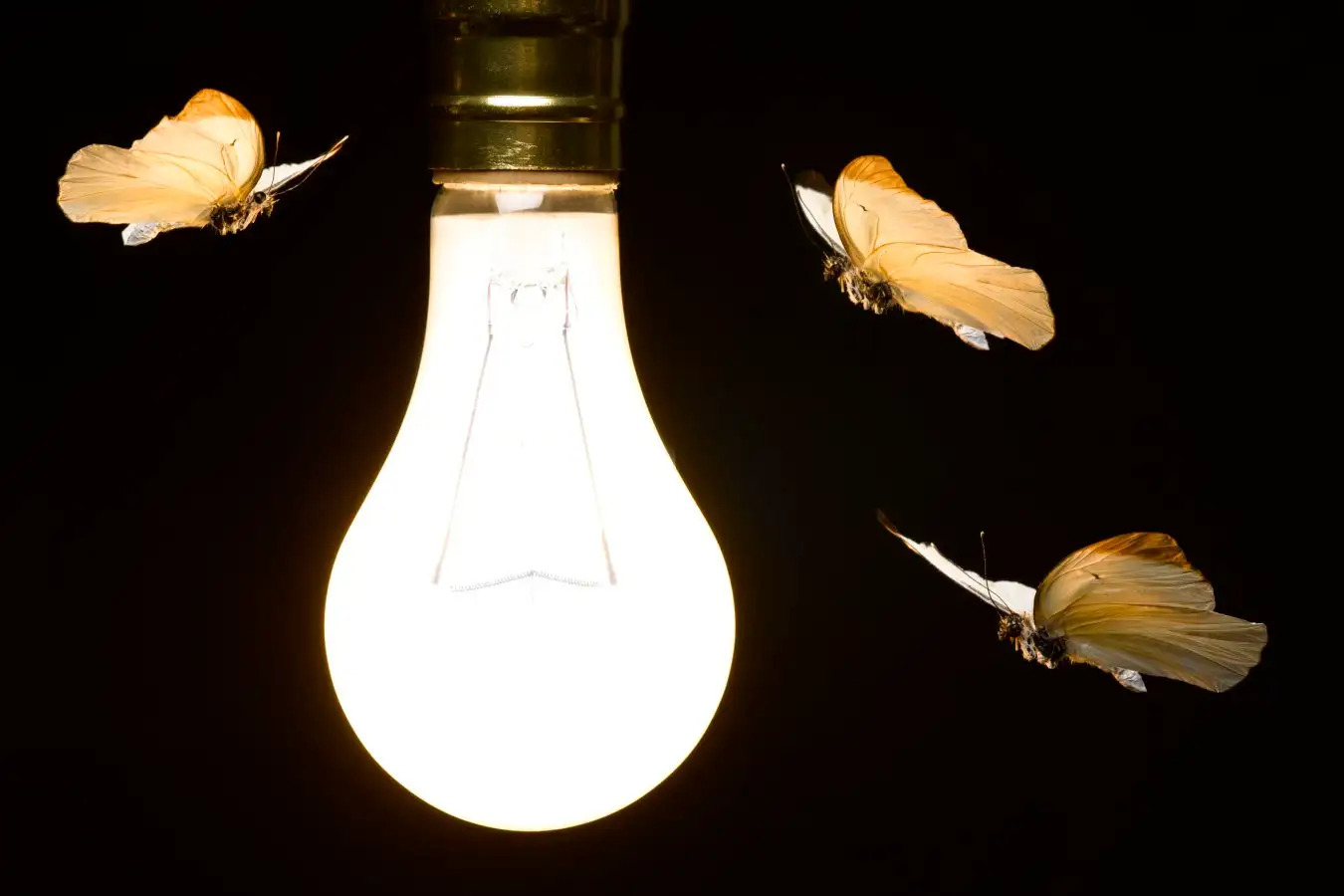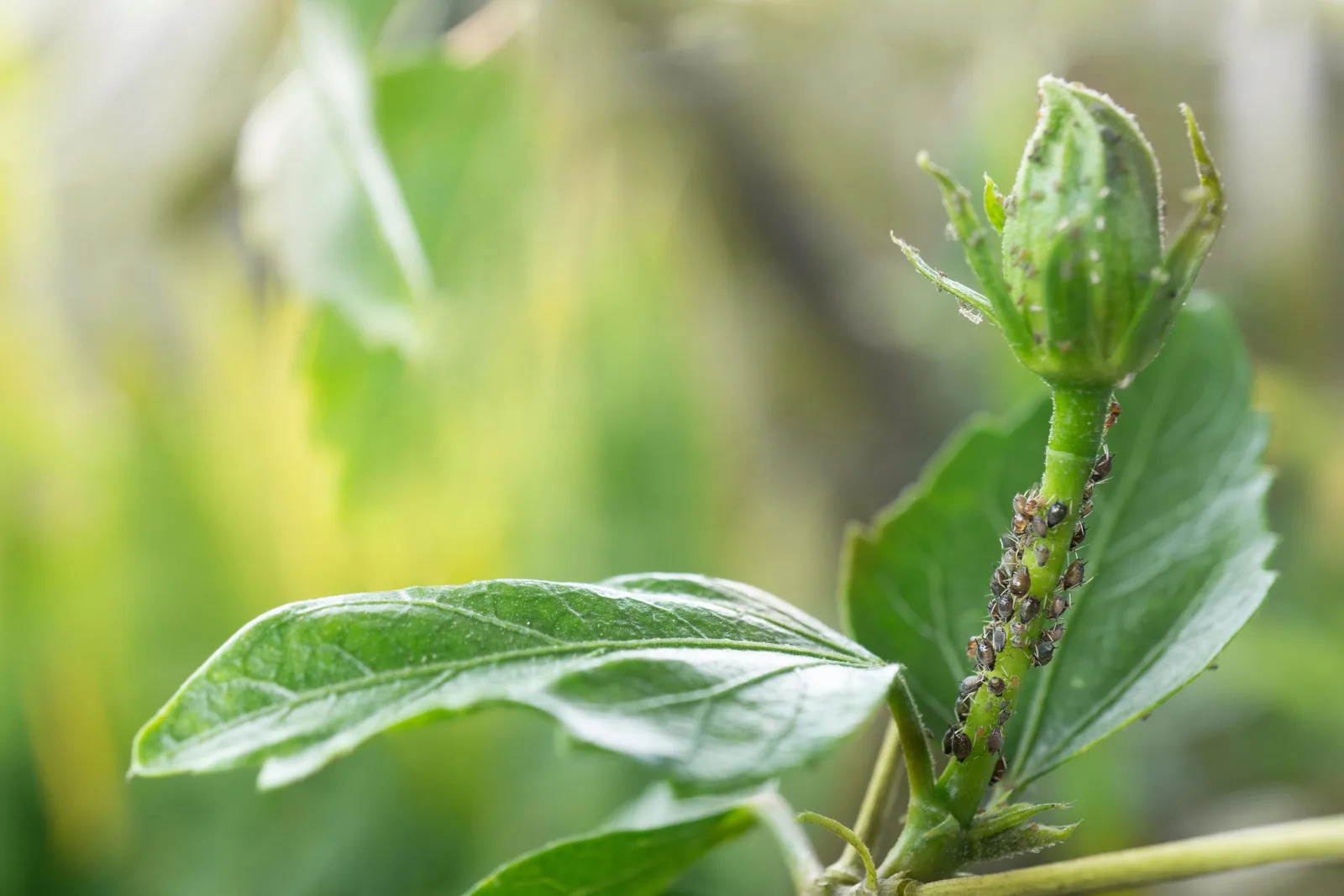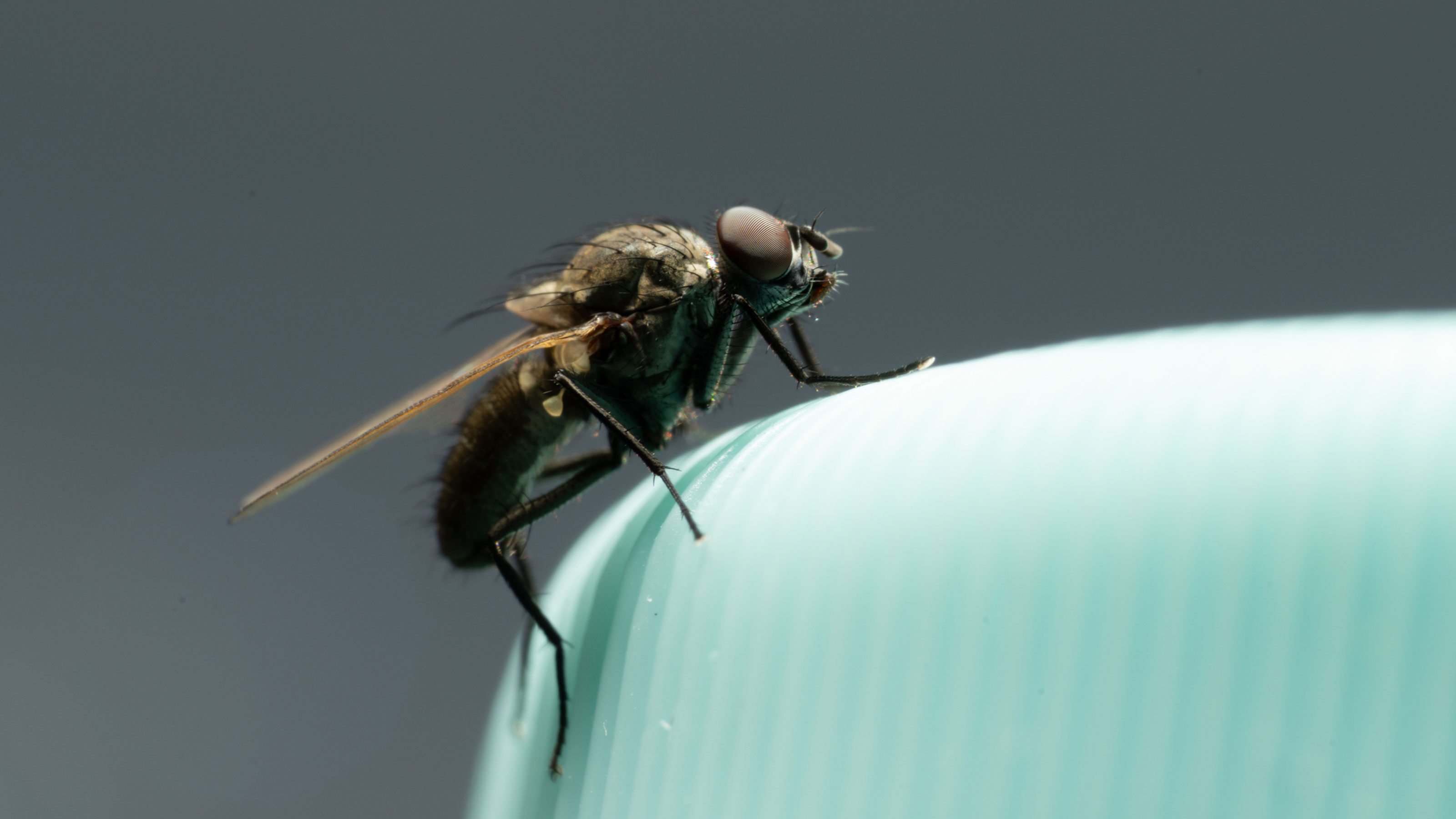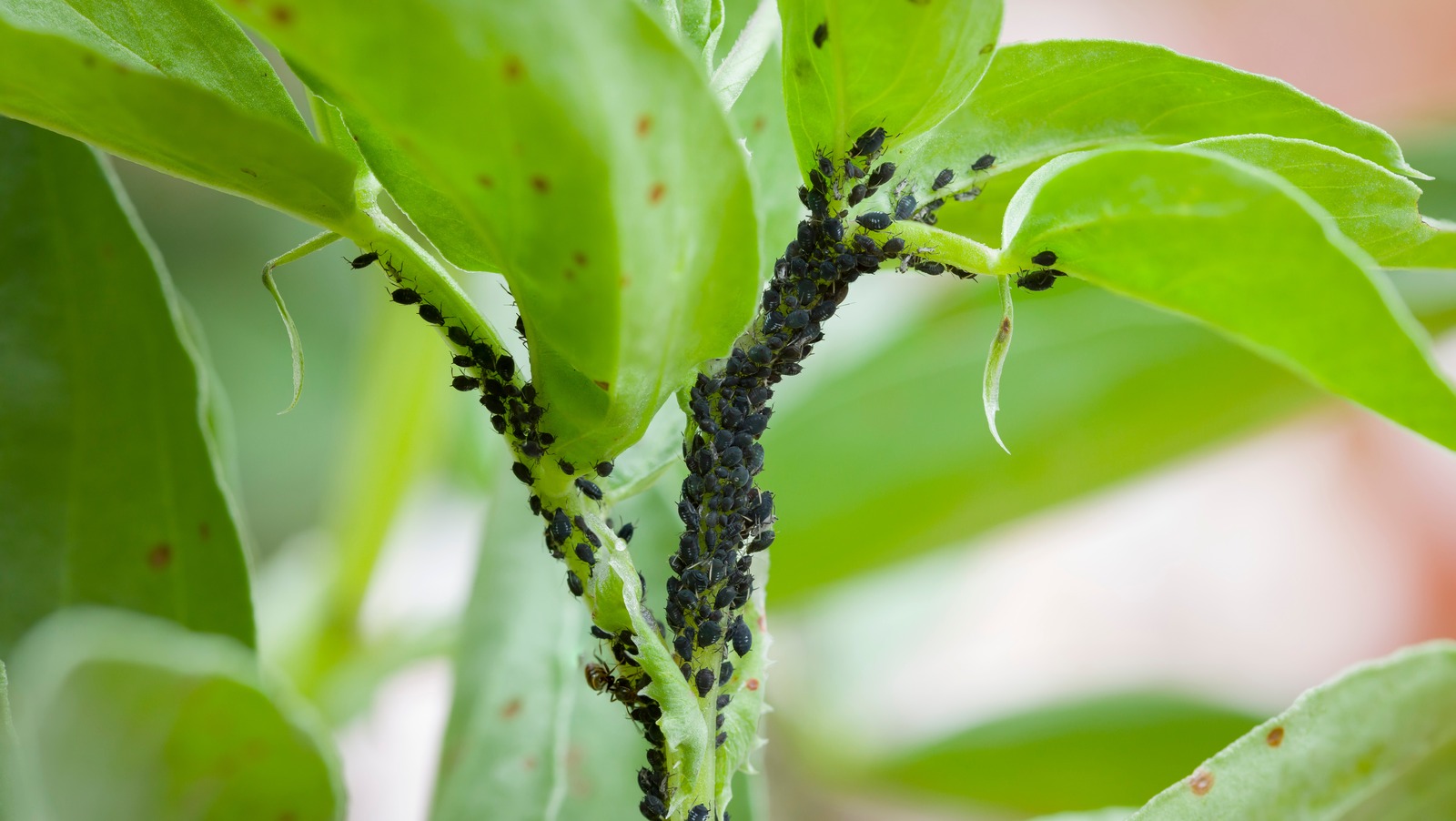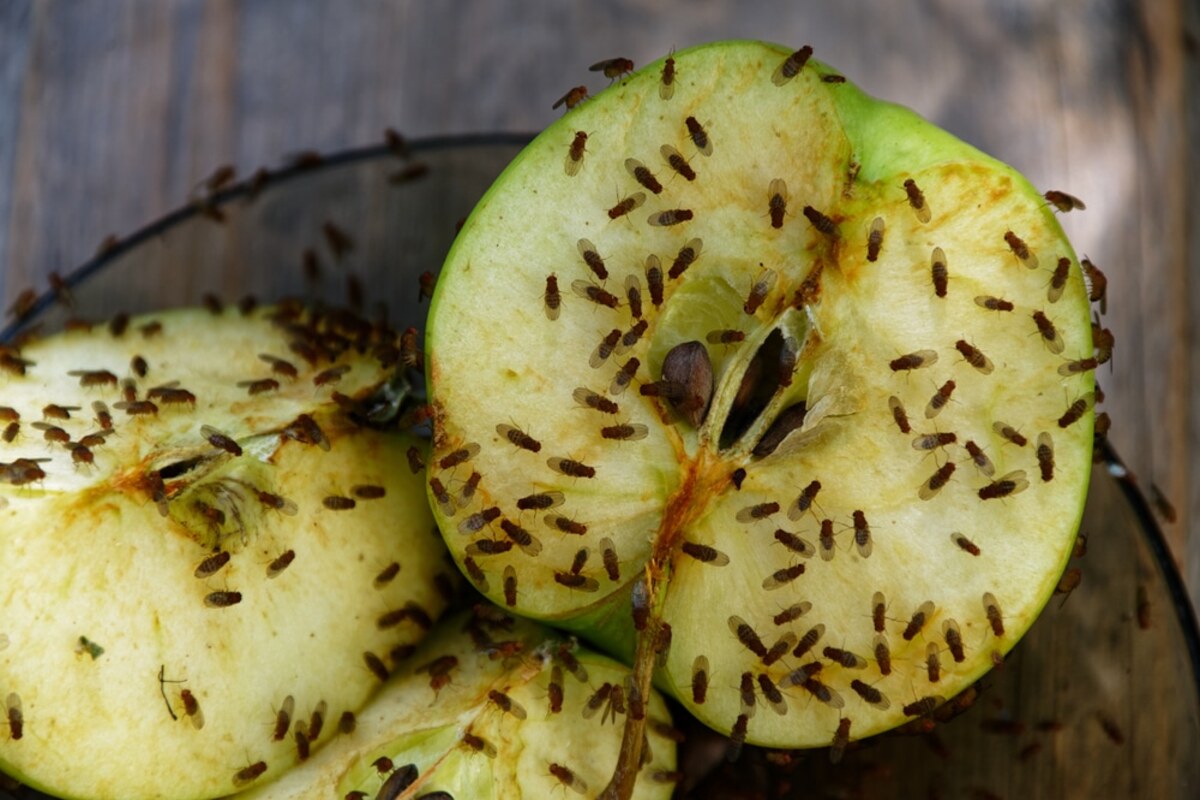Home>Gardening Tips and Tricks>Problem Solving>How To Get Rid Of Insects In Yard
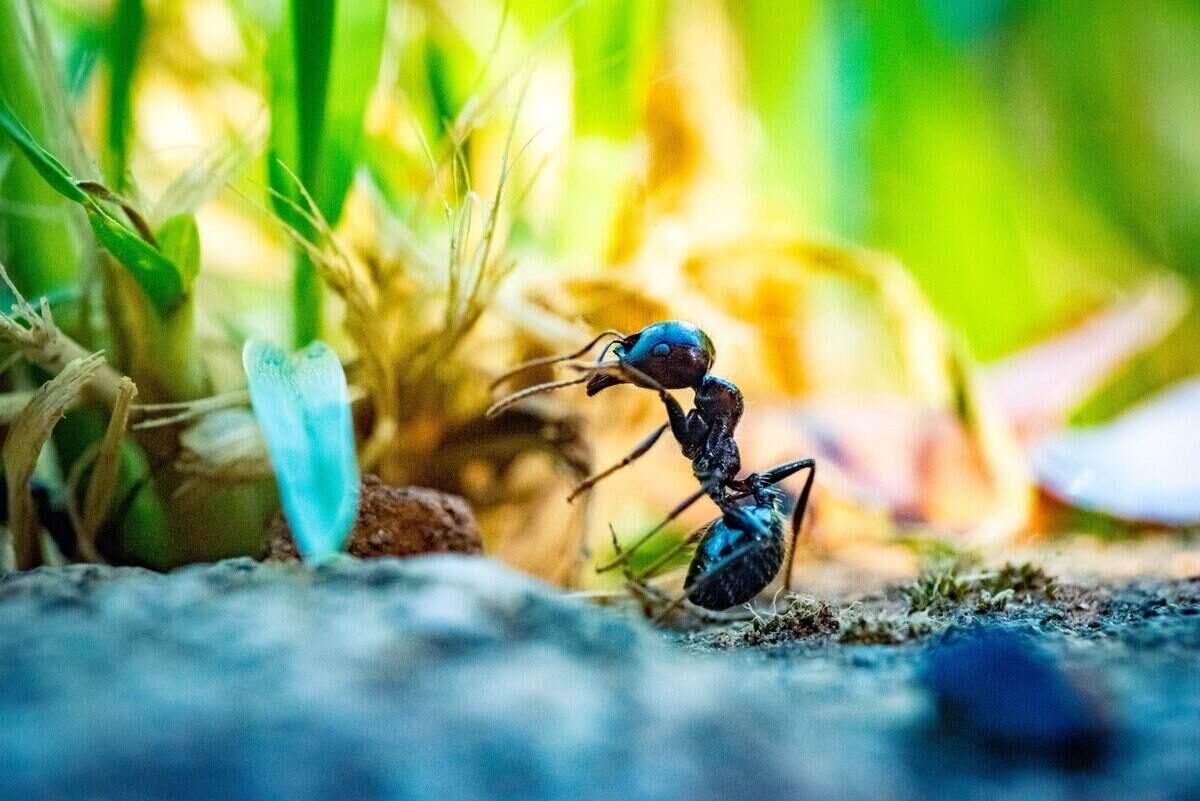

Problem Solving
How To Get Rid Of Insects In Yard
Modified: January 22, 2024
Looking for effective solutions to eliminate insects in your yard? Discover expert problem-solving techniques and get rid of those pesky bugs once and for all.
(Many of the links in this article redirect to a specific reviewed product. Your purchase of these products through affiliate links helps to generate commission for Chicagolandgardening.com, at no extra cost. Learn more)
Table of Contents
- Introduction
- Identifying Insect Infestation in the Yard
- Natural Remedies for Insect Control
- Removing Standing Water
- Planting Insect-Repelling Plants
- Using Essential Oils
- Creating DIY Insect Traps
- Chemical Solutions for Insect Control
- Insecticides
- Fungicides
- Herbicides
- Precautions and Safety Measures
- Seeking Professional Help for Insect Control
- Conclusion
Introduction
Welcome to the ultimate guide on how to get rid of insects in your yard. Dealing with insect infestations can be a frustrating and challenging task for any homeowner. Not only do insects disrupt the tranquility of your outdoor space, but some species can also pose a threat to the health and well-being of your family and pets.
Identifying the presence of insects in your yard is the first step towards effective control and prevention. From buzzing mosquitoes and pesky ants to destructive pests like termites and beetles, each insect requires a tailored approach to eliminate their population and ensure a bug-free yard.
In this comprehensive guide, we will explore a range of natural and chemical solutions that can help you reclaim your yard from unwanted pests. Whether you prefer eco-friendly remedies or professional-grade insecticides, the strategies outlined here will provide you with the tools and knowledge to protect your yard and maintain a pleasant outdoor environment.
It’s important to note that prevention is key when it comes to insect control. By implementing proactive measures and regularly inspecting your yard, you can significantly reduce the chances of a full-blown infestation. Additionally, understanding the specific needs and vulnerabilities of different insects will allow you to target and eliminate them more effectively.
Remember, every yard is unique, and the severity of the insect problem may vary. It may take a combination of methods and trial-and-error to find the most effective approach for your specific situation. So, let’s dive into the world of insect control and learn how to regain control of your yard!
Identifying Insect Infestation in the Yard
Before embarking on any insect control measures, it is crucial to identify the specific insects that are causing trouble in your yard. This will help you better understand their behavior, habits, and vulnerabilities, enabling you to choose the most appropriate control methods.
One of the easiest ways to identify an insect infestation is through visual inspection. Take note of any unusual insect activity, such as swarms, nests, or trails. Look for signs of damage to plants, trees, or structures, as certain insects can cause extensive harm.
Another important clue to consider is the presence of bite marks or stings on humans or pets. This can indicate the presence of biting insects like mosquitoes, fleas, or ticks. Additionally, be aware of any allergic reactions or unusual symptoms experienced after spending time in your yard, as this could be a sign of stinging insects or venomous pests.
If you are unsure about the type of insects in your yard, capturing a few specimens can be helpful. Place the insects in a container, taking care to avoid direct contact, and consult with a local extension office or pest control professional for identification.
Identifying the specific insects in your yard will allow you to tailor your control methods accordingly. For example, if you discover a termite infestation, you will need to focus on eliminating the termite colony and protecting your home’s structure. On the other hand, if you have a mosquito problem, you will want to target areas of standing water where they breed.
By understanding the specific insects plaguing your yard, you can choose the most effective and targeted control methods. This knowledge will save you time, money, and effort, as you can eliminate the problem at its root rather than relying on generic solutions.
Natural Remedies for Insect Control
When it comes to controlling insects in your yard, many homeowners prefer to use natural remedies. Not only are these methods environmentally friendly, but they also minimize exposure to potentially harmful chemicals. Here are some effective natural remedies for insect control:
1. Removing Standing Water
Standing water provides a breeding ground for mosquitoes and other water-loving insects. Regularly inspect your yard for areas where water accumulates, such as flower pots, bird baths, and clogged gutters. Remove or drain the water to eliminate these breeding sites and reduce the mosquito population.
2. Planting Insect-Repelling Plants
Strategically planting certain types of vegetation can help deter insects from infesting your yard. For example, lavender, citronella, and marigolds are known to repel mosquitoes, while mint and basil are effective against flies and ants. Incorporating these plants into your garden or creating container gardens around your outdoor space can provide natural protection.
3. Using Essential Oils
Essential oils have natural properties that repel insects. Dilute a few drops of essential oil, such as peppermint, eucalyptus, or tea tree oil, in water and spray it around your yard. You can target specific areas or use it as a general deterrent. Just be sure to reapply after rainfall or watering for maximum effectiveness.
4. Creating DIY Insect Traps
Homemade insect traps can be an effective way to control specific pests. For example, a mixture of sugar and vinegar can be used to attract and trap fruit flies, while a shallow dish with beer can lure and trap slugs. Research specific trap recipes for the insects you are dealing with and place them strategically in your yard.
Remember, while these natural remedies can be effective in controlling insects, they may not provide complete eradication. It’s essential to maintain a consistent and proactive approach to ensure long-term success in reducing the insect population in your yard.
Removing Standing Water
Standing water is a breeding ground for mosquitoes and other water-loving insects. By removing and preventing the accumulation of stagnant water in your yard, you can significantly reduce the risk of mosquito infestations and other water-related insect problems.
Start by regularly inspecting your yard for areas where water tends to collect. Common culprits include flower pots, buckets, bird baths, clogged gutters, and low-lying areas. Emptying and cleaning these containers on a regular basis will deny mosquitoes a place to lay their eggs.
In addition to emptying containers, take steps to improve drainage in your yard. Ensure that your gutters are free of debris and are properly directing water away from your home’s foundation. Fill in any low spots in your yard that tend to hold water after rainfall, as these are prime breeding grounds for mosquitoes.
Consider installing a rain barrel or underground drainage system to capture and redirect water away from your yard. This can help prevent pooling and reduce the risk of mosquito breeding. You can also level the ground or create slope gradients to encourage water to flow away from your yard.
For areas that cannot be completely eliminated, such as birdbaths or decorative water features, take proactive measures to control mosquito populations. Use larvicides or mosquito dunks, which are biological control agents that kill mosquito larvae without harming other organisms.
Remember to regularly inspect your yard for new sources of standing water, especially after rainstorms. By staying vigilant and diligent in removing standing water, you can significantly reduce the number of mosquitoes and other water-loving insects in your yard.
Planting Insect-Repelling Plants
A natural and aesthetically pleasing way to control insects in your yard is by strategically planting insect-repelling plants. These plants emit fragrances or have properties that repel certain insects, making them an excellent addition to your garden or landscaping.
One well-known example is citronella, a grass-like plant with a strong fragrance that repels mosquitoes. Planting citronella around outdoor seating areas, near windows, or in pots can help deter mosquitoes from invading your space.
Lavender is another popular choice for repelling insects. Its aromatic scent is disliked by mosquitoes, flies, and moths. Plant lavender in sunny areas of your garden or keep pots near entrances to help ward off these pests.
Marigolds are not only beautiful and vibrant flowers, but they also have the ability to repel insects. They release a scent that keeps mosquitoes, aphids, and even rabbits at bay. Plant marigolds around your vegetable garden to help protect your plants from aphid infestations.
Mint is known for its strong scent, which can repel ants, flies, and even rodents. Plant mint in pots or designated garden areas to deter these pests from entering your yard.
Basil is not only a delicious herb for cooking, but it also has insect-repelling properties. Plant basil near doorways, windows, or outdoor seating areas to deter flies and mosquitoes.
These are just a few examples of insect-repelling plants, and there are many more to choose from. Before selecting plants for your yard, consider the specific insects you are dealing with and research which plants are most effective against them.
Keep in mind that planting insect-repelling plants is not a foolproof method of insect control. While these plants can help deter insects, they may not completely eradicate them. It’s important to combine the use of these plants with other pest control measures for optimal results.
By incorporating insect-repelling plants into your yard, you can create a beautiful and fragrant outdoor space while naturally deterring unwanted pests.
Using Essential Oils
Essential oils have long been used for their aromatic properties, but did you know that they can also serve as effective natural insect repellents? Certain essential oils contain compounds that insects find unpleasant, making them an excellent option for controlling pests in your yard.
One popular essential oil for repelling insects is peppermint oil. Its strong and refreshing scent is known to deter ants, spiders, and mosquitoes. Dilute a few drops of peppermint oil in water and spray it around your yard, focusing on areas where insects are likely to gather or enter your home.
Eucalyptus oil is another powerful insect repellent. It is particularly effective against mosquitoes, ticks, and fleas. Mix a few drops of eucalyptus oil with water in a spray bottle and apply it to your skin, clothing, or outdoor furniture to keep these pests at bay.
Lemongrass oil is not only widely used for its pleasant citrusy scent, but it also acts as a natural insect repellent. Lemongrass oil is especially effective against mosquitoes, flies, and ants. Dilute a few drops of lemongrass oil in water and spray it around your yard or apply it directly to your skin, ensuring to perform a patch test beforehand.
Tea tree oil is well-known for its antiseptic properties, but it also doubles as an insect repellent. It can repel mosquitoes, flies, and even bed bugs. Mix a few drops of tea tree oil with water and spray it in areas where insects are present, such as windowsills, doorways, or outdoor seating areas.
When using essential oils for insect control, it’s essential to properly dilute them before application. Essential oils are highly concentrated and can cause skin irritation if used undiluted. Additionally, pregnant women, children, and pets may be more sensitive to essential oils, so it’s important to exercise caution and consult with a healthcare professional if necessary.
Remember, essential oils are not a one-size-fits-all solution. Different insects may respond differently to various essential oils, so it may require some trial and error to find the most effective option for your specific pest problem.
Using essential oils as a natural insect repellent can not only help protect your yard from unwelcome pests but also add a delightful scent to your outdoor space.
Creating DIY Insect Traps
Creating do-it-yourself (DIY) insect traps can be an effective and cost-efficient way to control specific pests in your yard. These traps attract and capture insects, helping to reduce their population. Here are some simple DIY insect traps you can try:
Fruit Fly Trap:
To make a fruit fly trap, fill a small glass or jar with a mixture of apple cider vinegar and a few drops of dish soap. Cover the jar with plastic wrap and secure it with a rubber band. Poke small holes in the plastic wrap. Fruit flies will be lured by the vinegar scent and get trapped in the jar.
Soda Bottle Mosquito Trap:
To create a mosquito trap, cut the top third of a plastic soda bottle and flip it over, creating a funnel shape. Fill the bottom part with a mixture of water, brown sugar, and yeast. Mosquitoes will be attracted to the carbon dioxide released by the yeast, enter the trap, and get trapped inside.
Beer Slug Trap:
If you’re dealing with a slug problem, a beer trap can be effective. Bury a small container, such as a margarine tub, in the ground and fill it halfway with beer. Slugs will be attracted to the beer, crawl into the container, and drown.
Sticky Fly Trap:
To make a sticky fly trap, cut strips of yellow or white cardboard or thick paper and coat them with a sticky substance like honey or petroleum jelly. Hang these strips near windows, doorways, or outdoor sitting areas to catch flies and other flying insects.
DIY Ant Bait:
To create a homemade ant bait, mix equal parts of sugar and borax. Place small amounts of the mixture on a piece of cardboard or in shallow dishes near ant trails or entry points. The sugar attracts the ants, while the borax acts as a natural insecticide that they take back to their colony.
Remember to place these DIY traps strategically around your yard where the targeted pests are most active or where they are causing the most trouble. Regularly check and replace the traps as needed.
While these DIY traps can be effective in reducing the population of specific pests, keep in mind that they may not provide complete eradication. It’s essential to combine these traps with other pest control methods for a comprehensive approach to insect control.
By creating DIY insect traps, you can actively combat specific pests in your yard and contribute to a more pest-free environment.
Chemical Solutions for Insect Control
In situations where natural remedies and DIY traps are not sufficient, chemical solutions can provide effective control of insects in your yard. It’s important to note that these methods should be used with caution and according to the instructions provided to minimize any potential risks.
1. Insecticides:
Insecticides are chemical formulations specifically designed to kill or control insects. They come in various forms, such as sprays, granules, or dusts. When using insecticides, it’s important to choose a product that targets the specific insect you’re dealing with and follows the instructions carefully.
Make sure to wear appropriate protective gear, such as gloves and a mask, when applying insecticides. Avoid spraying near edible plants or bodies of water to prevent contamination. Keep in mind that insecticides can be toxic to beneficial insects, so use them sparingly and selectively.
2. Fungicides:
Fungicides are chemicals used to control fungal diseases that may affect plants in your yard. Some fungal diseases, such as powdery mildew or black spot, can attract and harbor insects. By effectively treating and preventing fungal infections, you can indirectly reduce the appeal of your yard to insects.
When using fungicides, carefully follow the instructions provided and take necessary precautions, such as wearing protective clothing and avoiding contact with the skin or eyes. It’s important to select a fungicide that is suitable for the specific fungal disease you’re targeting and apply it at the recommended intervals.
3. Herbicides:
Herbicides are chemical formulations used to control weeds and unwanted vegetation in your yard. While not directly targeting insects, herbicides can help eliminate areas where insects hide or find shelter.
It’s crucial to choose a herbicide that is appropriate for the type of weed you’re dealing with and follow the instructions carefully. Apply herbicides during calm weather to minimize the risk of drift onto desirable plants. Keep in mind that some herbicides may have residual effects, so exercise caution when using them near edible plants or areas frequented by pets or children.
4. Precautions and Safety Measures:
When using chemical solutions for insect control, it’s crucial to prioritize safety. Always read the labels and instructions provided by the manufacturers and follow them diligently. Wear appropriate protective gear, such as gloves, goggles, and masks, to minimize exposure to the chemicals.
Keep in mind that chemical solutions should be used as a last resort and in conjunction with other integrated pest management (IPM) strategies. IPM combines various methods to minimize the use of chemicals and focuses on long-term, sustainable pest control.
If you’re unsure about the use of chemical solutions or if the infestation remains uncontrolled, it’s best to consult a professional pest control service. They have the expertise and knowledge to properly identify the insects and recommend the most effective and safe solutions for your specific situation.
Chemical solutions can be an effective tool in controlling insects in your yard, but it’s important to use them responsibly and with proper precautions to ensure the safety of yourself, your family, and the environment.
Insecticides
Insecticides are chemical solutions specifically formulated to control and kill insects. These products come in various forms, including sprays, granules, powders, and baits. Insecticides can be effective in eliminating a wide range of pests, from crawling insects like ants and cockroaches to flying insects such as mosquitoes and flies.
When using insecticides, it’s important to identify the target insect and choose a product specifically designed to control that particular pest. Different insects may require different active ingredients or application methods for optimal results.
Before applying insecticides, carefully read and follow the instructions provided by the manufacturer. Wear appropriate personal protective equipment, such as gloves and a mask, to minimize exposure. Take precautions to avoid contact with the skin, eyes, or inhaling the spray mist.
When applying insecticides outdoors, consider weather conditions. Windy days can cause drift, leading to unintended contamination of nearby plants or areas. It is advisable to apply insecticides during calm weather to ensure targeted application and reduce the risk of environmental harm.
It’s important to note that insecticides can have varying degrees of toxicity to humans, pets, and beneficial insects. Be cautious when using them in areas frequented by children or pets. Avoid applying insecticides near edible plants to prevent contamination of produce.
Some insecticides have residual effects, meaning they provide long-term control even after the initial application. This can be beneficial for controlling persistent insect infestations. However, it is essential to follow the recommended reapplication intervals to maintain effectiveness and minimize any potential negative impact on the environment.
Insecticides are most effective when used as part of an integrated pest management (IPM) approach. This involves combining multiple strategies, such as proper sanitation, exclusion methods, and targeted insecticide application, to achieve long-term pest control while minimizing the reliance on chemicals.
If you prefer a more eco-friendly approach, consider using insecticides that are labeled as organic or derived from natural sources. These can be effective in controlling pests while minimizing the impact on the environment.
For severe or persistent insect infestations, it may be necessary to seek the expertise of professional pest control services. They can assess the situation, identify the most appropriate insecticide, and apply it safely and effectively to control the problem.
Insecticides can be a valuable tool in combating insect infestations. When used responsibly and as part of a comprehensive pest management plan, they can help restore a pest-free environment and protect your yard from damage caused by unwanted pests.
Fungicides
Fungal diseases can wreak havoc on your plants, causing wilting, browning, and even death. Fungicides are chemical solutions specifically formulated to control and prevent these fungal infections. They are vital tools in maintaining the health and vitality of plants in your yard.
When using fungicides, it’s important to identify the specific fungal disease affecting your plants. Different fungicides are effective against specific types of fungi, so choose a product that targets the specific disease you’re dealing with.
Fungicides come in various formulations, including sprays, dusts, and systemic treatments. Follow the instructions provided by the manufacturer regarding application rates, timings, and safety precautions.
Before applying fungicides, carefully inspect your plants for signs of fungal infections. Look for symptoms such as discolored or spotted leaves, wilting, or the presence of mold or fungal growth. Early intervention can prevent the spread of the disease and help protect your plants.
When using fungicides, it’s important to follow proper safety measures. Wear protective clothing, such as gloves and a mask, to minimize skin contact and inhalation of the product. Avoid applying fungicides on windy days, as this can lead to drift and unintended contamination of other plants or areas.
It’s important to read and understand any restrictions or waiting periods associated with fungicide use on edible crops. Some fungicides have specific guidelines regarding the application timing and the number of days between the last application and harvest.
Fungicides can be applied preventively to protect plants from fungal infections or curatively to treat existing infections. However, prevention is often the best approach. Proper sanitation, such as removing diseased plant materials and ensuring good airflow between plants, can help minimize the likelihood of fungal diseases.
Integrated pest management (IPM) strategies, which combine cultural, biological, and chemical control methods, are highly recommended for managing fungal diseases effectively. Incorporating proper watering practices, maintaining nutrient balance, and implementing good plant care practices can help reduce the reliance on fungicides.
While fungicides can be effective in controlling fungal diseases, it’s important to understand their limitations. Some fungi may develop resistance to certain fungicides over time. Rotating between different fungicides with distinct modes of action can help prevent resistance and maintain effectiveness.
For severe or persistent fungal infections, professional advice or intervention from a qualified arborist or landscape professional may be necessary. They can provide expert recommendations on product selection and application techniques to effectively combat the fungal disease and protect your plants.
Remember, proper identification of the fungal disease, adherence to application guidelines, and integration with other management practices are crucial for successful and responsible use of fungicides in your yard.
Herbicides
Weeds can be a persistent problem in any yard, competing with your desired plants for resources and detracting from the overall appearance of your landscape. Herbicides are chemical solutions specifically formulated to control and eliminate unwanted vegetation, including weeds.
When using herbicides, it’s important to identify the types of weeds you’re dealing with. Different herbicides are formulated to target specific types of weeds, so choose a product that is effective against the particular weed species you’re trying to control.
Herbicides come in different formulations, such as sprays, granules, or pre-emergent treatments. Follow the instructions provided by the manufacturer regarding application rates, application methods, and safety precautions.
Before applying herbicides, carefully inspect your yard for the presence of weeds. Identify the areas where weeds are most prevalent and target those areas with herbicide application. Be mindful of desirable plants nearby to avoid accidental damage.
When using herbicides, always follow proper safety measures. Wear protective clothing, such as gloves, long sleeves, and pants, to minimize skin contact with the herbicide. Use goggles and a mask to protect your eyes and respiratory system from spray drift or exposure to the herbicide.
Applying herbicides during favorable weather conditions is crucial for optimal results. Choose a calm day with little to no wind to prevent spray drift onto desirable plants. Avoid application if rain is expected within 24 to 48 hours, as it may reduce the effectiveness of the herbicide.
Residual herbicides can provide long-lasting control by preventing weed seeds from germinating. However, it’s important to read and understand the herbicide label regarding restrictions, waiting periods, and rotational cropping guidelines to minimize any potential negative impact on the environment or future plantings.
While herbicides can effectively control weeds, it’s important to integrate other weed management strategies as well. Proper lawn care practices, such as regular mowing and appropriate fertilization, can help promote a healthy turf that competes with weeds.
Integrated pest management (IPM) strategies, which combine cultural, mechanical, and chemical control methods, are recommended for successful weed management. These strategies involve using herbicides as part of a comprehensive approach that includes proper weed identification, prevention, and minimizing herbicide use as much as possible.
In some cases, manual weed removal or mechanical methods may be more appropriate or preferred, especially for small infestations or areas where using herbicides is not practical or desirable. Hand pulling, hoeing, or using mulch to smother weeds can be effective alternatives to herbicide use.
If you’re unsure about the appropriate herbicides to use or need assistance in managing a significant weed problem, it’s advisable to consult with a professional landscape or pest control service. They can provide expert advice on herbicide selection, application techniques, and integrated management strategies.
Remember, responsible use of herbicides involves proper identification of the weed, adherence to label instructions, and consideration of the potential impact on the environment and desirable plants.
Precautions and Safety Measures
When using chemical solutions for insect and weed control in your yard, it’s essential to prioritize safety and take necessary precautions to protect yourself, your family, and the environment. Here are some important precautions and safety measures to consider:
Read and Follow Instructions:
Read and understand the labels and instructions provided by the manufacturer for any chemical products you use. Follow the recommended application rates, timings, and safety guidelines. Using chemicals incorrectly can lead to ineffective control, harm to desired plants, or potential health risks.
Protective Gear:
Wear appropriate personal protective equipment (PPE) when handling and applying chemical solutions. This may include gloves, goggles, masks, long sleeves, and pants. PPE helps minimize exposure to the chemicals and reduces the risk of skin contact, inhalation, or eye irritation.
Proper Storage and Disposal:
Store chemicals in their original containers and keep them out of reach of children and pets. Ensure that lids are tightly sealed to prevent leakage or spills. When disposing of chemical containers or excess product, follow local disposal regulations and guidelines to minimize environmental impact.
Appropriate Timing and Weather Conditions:
Choose the right timing and weather conditions for chemical application. Avoid applying chemicals during windy conditions to prevent drift onto desirable plants or neighboring properties. Consider weather conditions that can affect the effectiveness and safety of the product, such as rain or extreme heat.
Avoid Contamination of Water Sources:
Avoid spraying chemicals near bodies of water, such as ponds, streams, or wells, to prevent contamination. Chemicals can be harmful to aquatic life and have long-lasting effects on the ecosystem. Use water-resistant or water-insoluble chemicals when necessary to minimize runoff.
Minimize Exposure to Non-Target Organisms:
Take precautions to minimize exposure of non-target organisms to chemical solutions. Be mindful of beneficial insects, such as bees and butterflies, and avoid spraying flowers in bloom, where these insects forage. Selectively target the areas and pests you wish to control, minimizing harm to non-target organisms.
Practice Integrated Pest Management (IPM):
Implement integrated pest management strategies that rely on a combination of prevention, cultural practices, biological controls, and chemical solutions. This holistic approach reduces the reliance on chemicals and promotes long-term, sustainable pest control.
Consult Professionals:
If you’re unsure about the appropriate use or application of chemical solutions, or if the infestation remains uncontrolled, it’s best to consult with a professional pest control or landscaping service. They have the expertise and knowledge to assess the situation, recommend the most effective and safe solutions, and apply them properly.
By taking these precautions and safety measures, you can effectively control pests and weeds while minimizing the risks associated with using chemical solutions in your yard. Remember, responsible and informed use of chemicals is essential for protecting your health, the environment, and the overall well-being of your outdoor space.
Seeking Professional Help for Insect Control
Dealing with a severe or persistent insect infestation in your yard can be overwhelming and challenging. In such cases, seeking professional help from a pest control service can provide you with the expertise, experience, and resources needed for effective insect control.
Professional pest control technicians have a deep understanding of different insect species, their behavior, and the most effective control methods. They can accurately identify the specific pests infesting your yard and tailor a treatment plan to address the problem.
By hiring professionals, you gain access to a wider range of insect control products that may not be readily available to the general public. These products are often more potent and effective in exterminating pests, ensuring long-lasting results.
Professional pest control services also have the equipment and tools needed to efficiently treat your yard. From sprayers and baits to traps and barriers, they are equipped with the necessary resources to target and eliminate the infestation effectively.
In addition to their knowledge and equipment, pest control professionals stay up to date with the latest research and advancements in insect control. They understand the most environmentally friendly, low-toxicity options available and can provide you with sustainable solutions that minimize the impact on the ecosystem.
Working with professionals can save you time and effort. They handle the entire process, from initial assessment to treatment and follow-up visits. This allows you to focus on other tasks and activities while leaving the insect control in capable hands.
Professional pest control services often offer guarantees or warranties on their work. This means that if the infestation persists after treatment, they will return to address the issue without any additional cost. This provides you with peace of mind and ensures that the problem is fully resolved.
It’s important to choose a reputable and licensed pest control company. Look for companies with a proven track record, good customer reviews, and certifications in integrated pest management (IPM) or industry-specific qualifications. Don’t hesitate to ask for references or clarification on their treatment methods.
While professional services may come at a cost, the value they provide in terms of expertise, efficiency, and long-term results often justifies the investment. You can trust that your yard will be treated effectively, and the risk of reinfestation will be significantly reduced.
Remember, seeking professional help for insect control is a viable option when faced with a challenging infestation. Their specialized knowledge, resources, and experience can help restore a pest-free environment, allowing you to enjoy your yard without the burden of unwanted pests.
Conclusion
Controlling and eliminating insects in your yard requires a combination of effective strategies and approaches. From natural remedies to chemical solutions, there are various methods available to help you regain control of your outdoor space and create a pest-free environment.
Natural remedies, such as removing standing water, planting insect-repelling plants, using essential oils, and creating DIY traps, offer environmentally friendly options for insect control. These methods can be highly effective, especially when used in combination and tailored to the specific pests you’re dealing with.
Chemical solutions, such as insecticides, fungicides, and herbicides, can provide more immediate and targeted control of pests and weeds. When using these chemical solutions, it’s important to follow instructions, prioritize safety, and consider their impact on the environment and non-target organisms.
Precautions and safety measures should always be taken into account when using any form of insect or weed control. This includes wearing protective gear, proper storage and disposal of chemicals, avoiding contamination of water sources, and minimizing exposure to non-target organisms.
In some cases, seeking professional help from a pest control or landscaping service may be necessary, especially for severe or persistent infestations. Professional technicians have the expertise, equipment, and resources to accurately diagnose the problem and provide targeted and effective solutions.
Remember, maintaining a pest-free yard requires an ongoing commitment to prevention, regular maintenance, and proper sanitation. Integrated pest management (IPM) strategies that combine various methods, such as cultural practices, biological controls, and targeted chemical use, can provide long-term and sustainable pest control.
By implementing a comprehensive approach to insect control, you can enjoy a peaceful and pest-free yard that is safe and inviting for both you and your family. Whether you choose natural remedies, chemical solutions, or professional assistance, the goal is to create a healthy and thriving outdoor space that you can fully enjoy.
